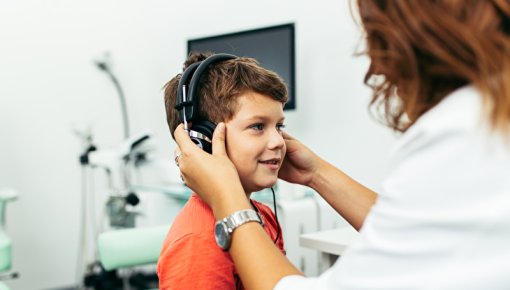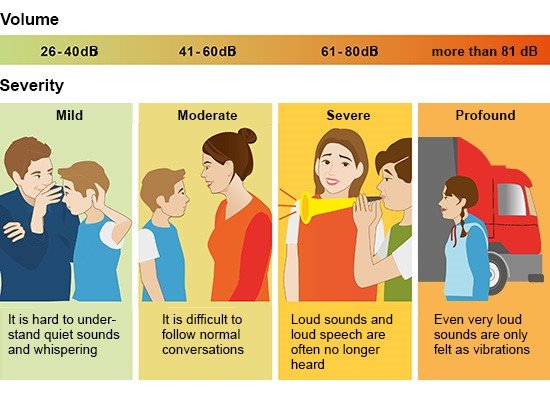Bosteels S, Van Hove G, Vandenbroeck M. The roller-coaster of experiences: becoming the parent of a deaf child. Disability & Society 2012; 27(7): 983-996.
Deutsche Gesellschaft für Hals-Nasen-Ohren-Heilkunde, Kopf- und Hals-Chirurgie (DGNO-KHC). S2k-Leitlinie Implantierbare Hörgeräte (in Überarbeitung). AWMF register no.: 017-073. 2017.
Erbasi E, Scarinci N, Hickson L et al. Parental involvement in the care and intervention of children with hearing loss. Int J Audiol 2018; 57(Sup2): S15-S26.
Gemeinsamer Bundesausschuss (G-BA). Richtlinie über die Verordnung von Hilfsmitteln in der vertragsärztlichen Versorgung (Hilfsmittel-Richtlinie/HilfsM-RL). 2025.
Institute for Quality and Efficiency in Health Care (IQWiG, Germany). Neonatal screening for early detection of hearing impairment: Final report; Commission S05-01. 2007.
Le Clercq CM, van Ingen G, Ruytjens L et al. Music-induced Hearing Loss in Children, Adolescents, and Young Adults: A Systematic Review and Meta-analysis. Otol Neurotol 2016; 37(9): 1208-1216.
Lenarz T, Boenninghaus HG. Hals-Nasen-Ohren-Heilkunde. Berlin: Springer; 2012.
Nickbakht M, Meyer C, Scarinci N et al. A qualitative investigation of families'needs in the transition to early intervention after diagnosis of hearing loss. Child Care Health Dev 2019; 45(5): 670-680.
Scarinci N, Erbasi E, Moore E et al. The parents' perspective of the early diagnostic period of their child with hearing loss: information and support. Int J Audiol 2018; 57(sup2): S3-S14.
Śliwińska-Kowalska M, Zaborowski K. WHO Environmental Noise Guidelines for the European Region: A Systematic Review on Environmental Noise and Permanent Hearing Loss and Tinnitus. Int J Environ Res Public Health 2017; 14(10): 27.
Szarkowski A, Brice PJ. Hearing Parents' Appraisals of Parenting a Deaf or Hard-of-Hearing Child: Application of a Positive Psychology Framework. J Deaf Stud Deaf Educ 2016; 21(3): 249-258.
Wang J, Sung V, Carew P et al. Prevalence of Childhood Hearing Loss and Secular Trends: A Systematic Review and Meta-Analysis. Acad Pediatr 2019; 19(5): 504-514.
World Health Organization (WHO). Deafness and hearing loss. 2025.
IQWiG health information is written with the aim of helping people understand the advantages and disadvantages of the main treatment options and health care services.
Because IQWiG is a German institute, some of the information provided here is specific to the German health care system. The suitability of any of the described options in an individual case can be determined by talking to a doctor. informedhealth.org can provide support for talks with doctors and other medical professionals, but cannot replace them. We do not offer individual consultations.
Our information is based on the results of good-quality studies. It is written by a team of health care professionals, scientists and editors, and reviewed by external experts. You can find a detailed description of how our health information is produced and updated in our methods.


